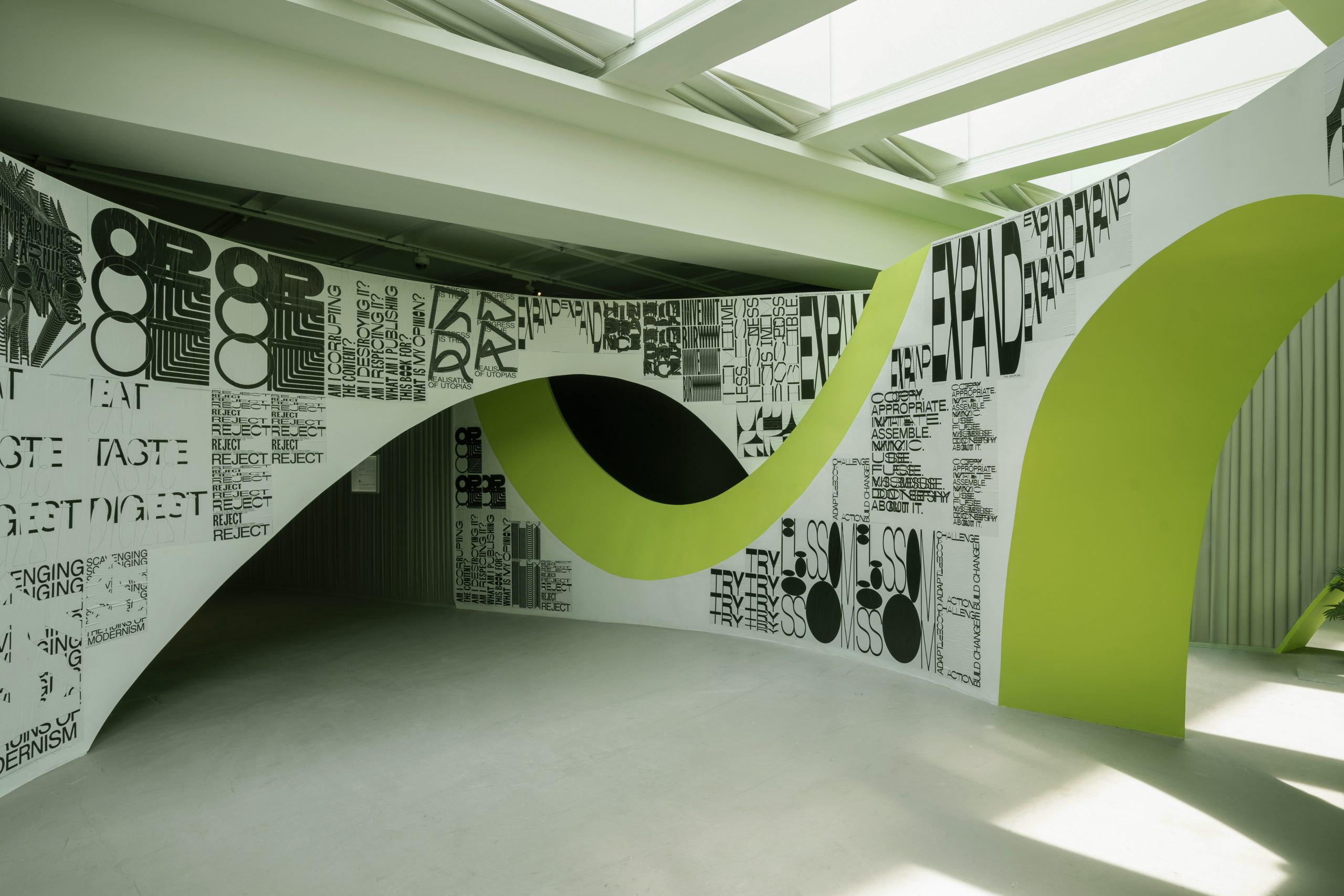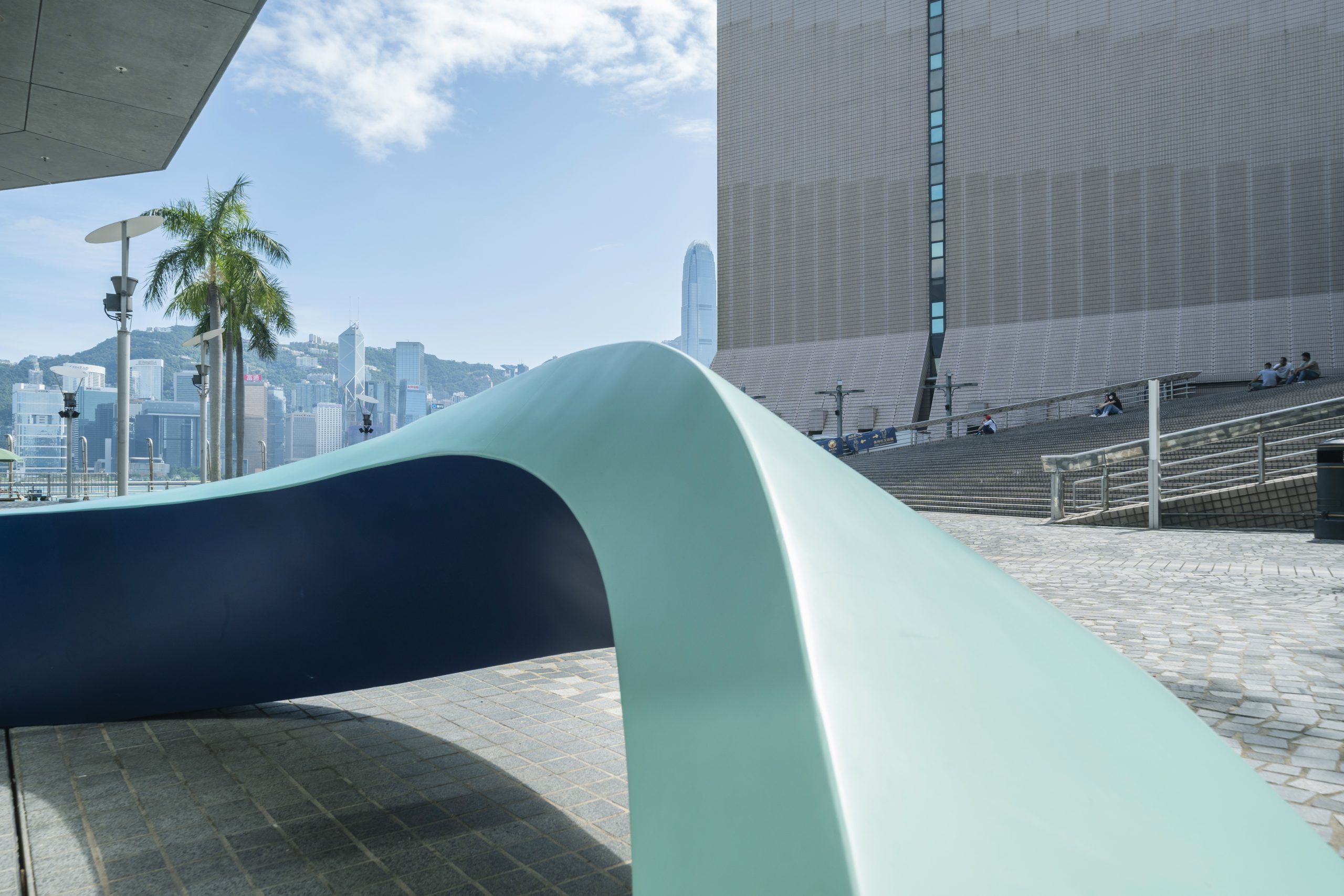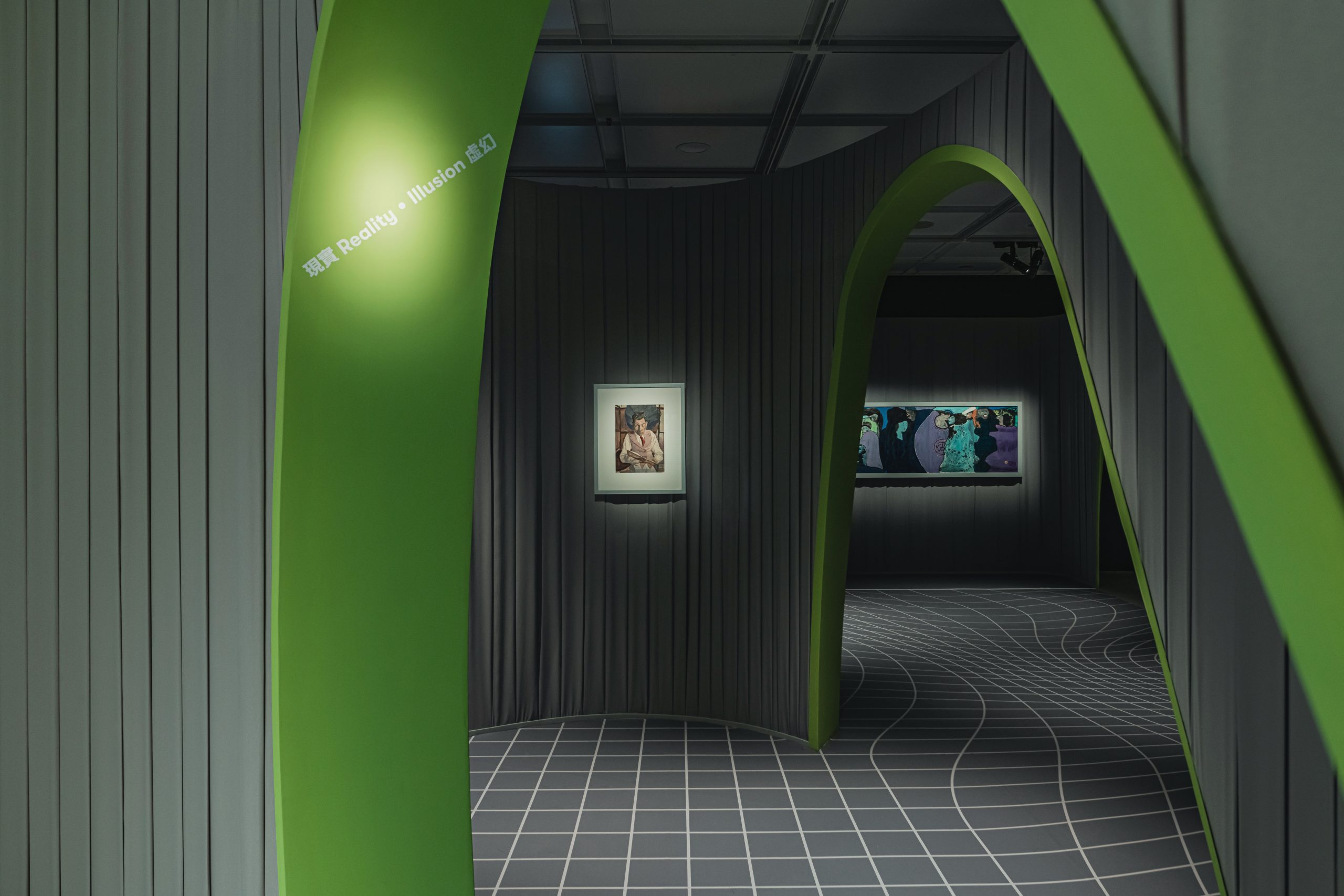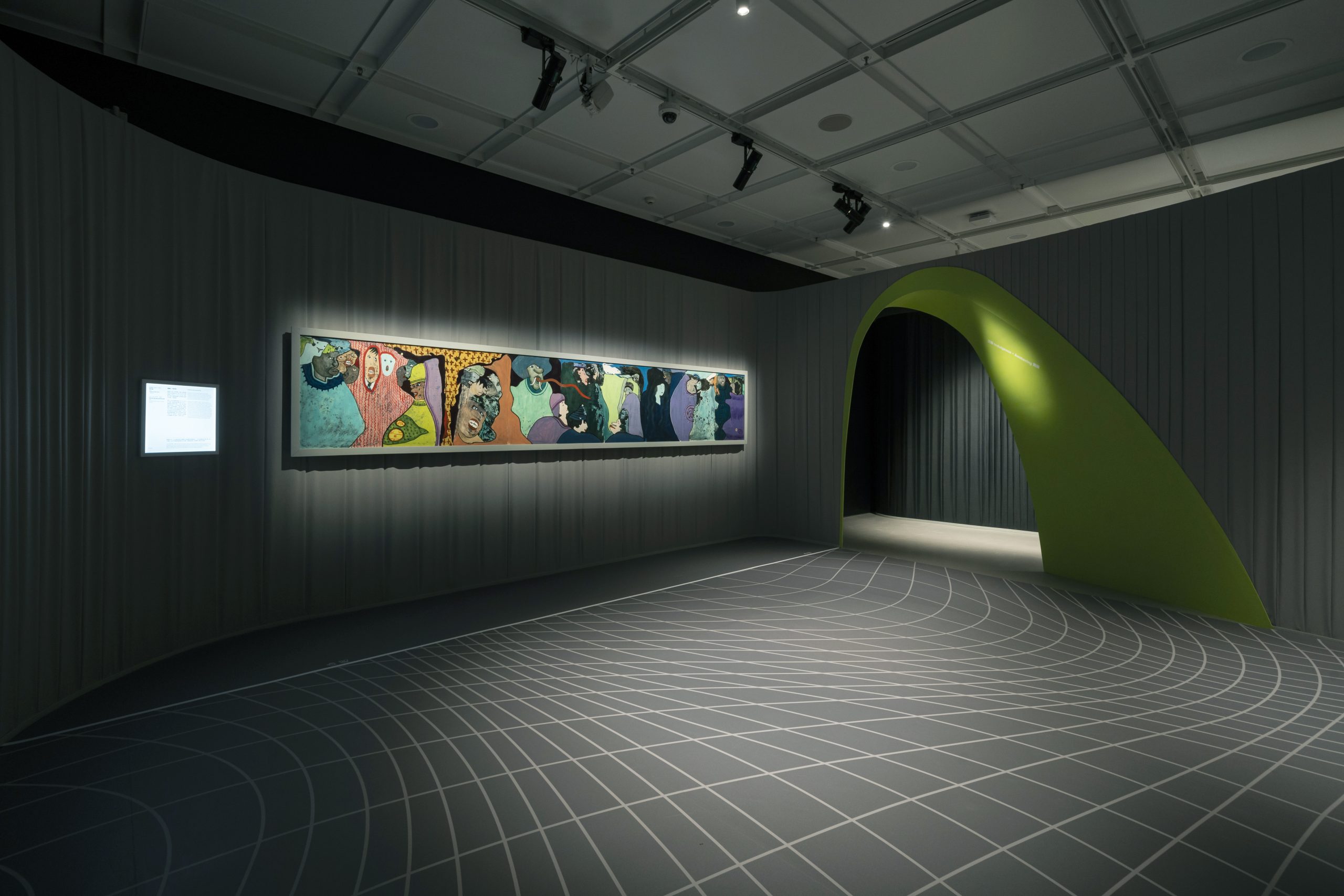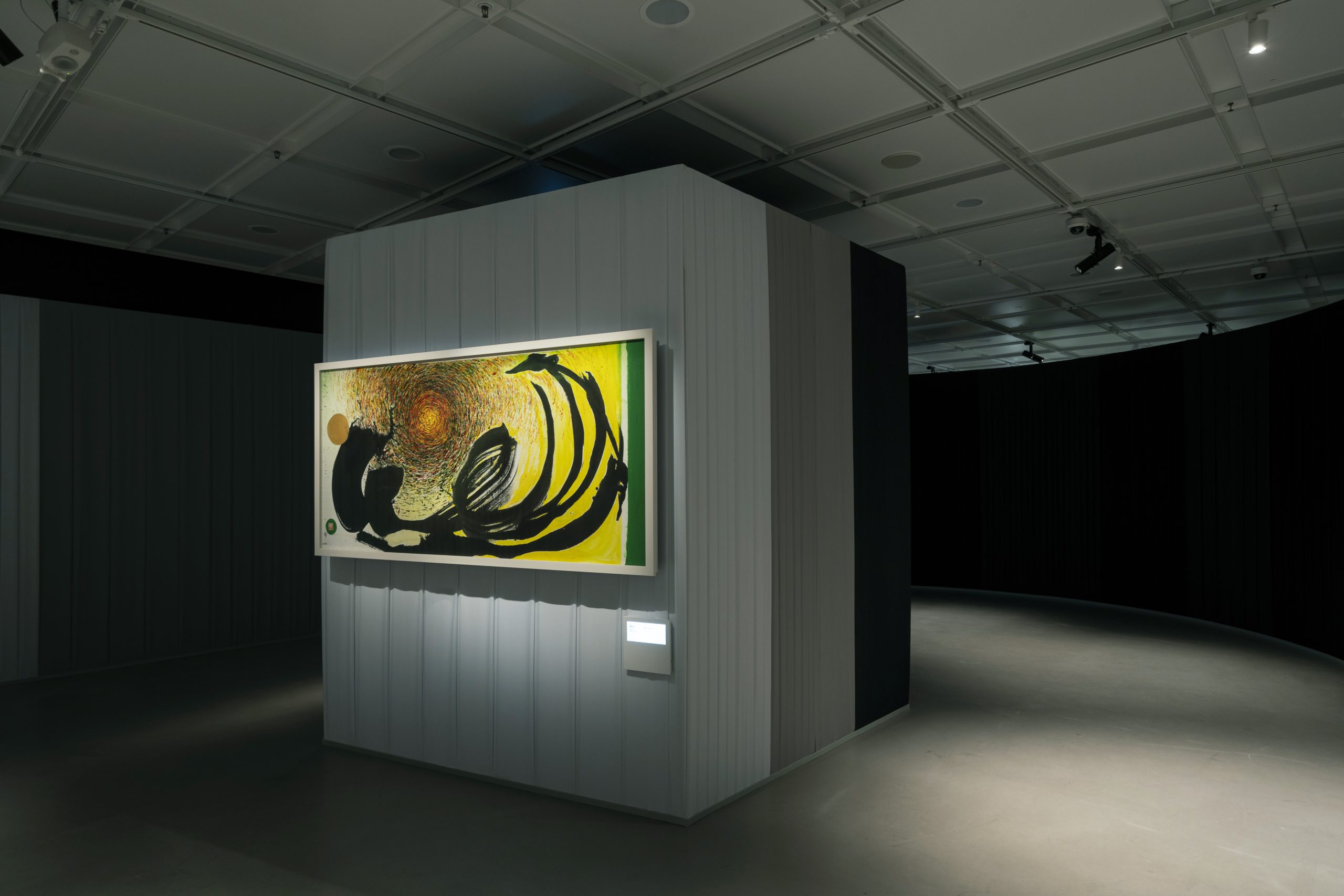In-Between
Exhibition Design | One Bite Design Studio
Photography | Long-hei Chan & Kevin Mak
Audio Guide | Dr. Chi-chung Wong, Yoyo Sham & Uncle Siu
Exhibition Music | Sea Island & Ferry
To commemorate its 60th anniversary, the Hong Kong Museum of Art commissioned local designer Choi Kim-hung as the Lead Artist to conceive the special exhibition.
The exhibition, themed “In-Between,” explores the concept of “Art is Practice,” reflecting the enduring journey of artistic creation. The Chinese title, “行行” (pronounced “hang hang”), evokes the idea of a long journey, symbolising the continuous process of growth, experimentation, and breakthroughs that artists experience. The curatorial approach focused on showcasing the transformative journey of artists, highlighting the changes and breakthroughs inherent in their creative process.


Hamlet Auyeung
Over again
Hamlet explores creativity as an ongoing journey toward “utopia.” He believes that utopia is not a destination but a continuous process of creation and self-reflection. Through visual and typographic experiments, Hamlet examines how the actions of designers and makers influence his own work. His project, Over again, presented through street signs and an AR experience, reflects on how creative acts can inspire change and shape the world around us.
Chan Chi-keung, Matthew
In-between decision
Matthew explores the impact of life’s decisions and how they shape our identity. Through encounters with people from diverse backgrounds, he reflects on the courage required to embrace one’s choices. Matthew believes that the key is not in making the “right” decision, but in listening to ourselves and owning our choices. His work invites viewers to reflect on their own decisions and the freedom that comes from accepting their outcomes, no matter the direction.
Leung Tsz-fung, Benny
1982
As he approaches 40, Benny reflects on life’s turning points and the questions of identity. Drawing from his experience as both a graphic designer and performer, Benny explores the doubts and decisions that shape his creative journey. In this interactive installation, he interviews peers born in 1982, piecing together reflections on “role identity and life choices” through screen images, inviting the audience to share their own experiences.
Lam Wang-chak, Daniel
In-between desires
Daniel explores life’s questions through his branding work by creating visual systems that contrast with his personal experiences. In this project, Daniel pushes the boundaries of visuality, expressing desires and creative freedom in a borderless space. His work presents compressed scenes of light and shadow, reconfiguring the relationship between objects. Viewers are immersed in a transformative, meandering performance within a long corridor, observing the interplay of matter, form, and iconography.
Music | Sea Island & Ferry
Miss Bean
In-between gaze border
Miss Bean explores the dynamics of the “gaze” in a world shaped by social media. Her work examines how the virtual and real worlds blur, altering how we see and are seen. Drawing on Jacques Lacan’s Gaze Theory, she reflects on how our actions are shaped by the perceived judgments of others. Through her immersive installation, viewers experience the tension between private and public spaces, questioning how the gaze shapes our desires and identities in a virtualised reality.
Ho Pui-shan, Saki
In-between departure (time vector)
Time shapes and initiates change. For Saki, life’s journeys are marked by decisions and actions that ripple through her experiences. Over the past decade, driven by curiosity, Saki has explored life’s questions through her travels. The departure lounge has become a symbolic turning point for her, where time moves slowly, anticipating the changes each journey brings. In this virtual departure hall, Saki invites audiences to embrace these transitions with an open heart and a sense of joy.
Mui Sze-wa, Sarah
In-between déjà vu
Artist and architect Sarah, explores the intersection of art and architecture, believing both disciplines can enhance cities and lives. With a passion for public space design, she rejects the limitations of commercialism, viewing art as something to be shared and experienced. Using rational geometric forms to express intimate ideas, Sarah reflects on Hong Kong’s evolving urban landscape, offering thoughtful responses to the city’s changes through her designs.
Luis Chan (1905-1995)
Self-portrait and The rich, the poor and the snob
Luis Chan, a self-taught painter known as the “King of Watercolour” in the 1930s, shifted dramatically from realism to abstraction in the 1950s and 1960s. His 1969 piece, The Rich, the Poor and the Snob, showcases unconventional, surrealistic elements that mark this transition. Influenced by Western modern art trends and facing rejection from the 1962 Hong Kong Art Today exhibition, Chan embraced change, prompting viewers to consider their own willingness to adapt in an ever-evolving world.
Chou Lu-yun, Irene (1924-2011)
My inner world I and Mind of the cosmo
Irene Chou’s paintings reflect her emotional journey through two distinct life stages. My Inner World I, created in 1976 during a challenging period marked by personal losses and health struggles, employs dark ink layers to convey her sorrow. In contrast, Mind of the Cosmo, painted in 2006, showcases a vibrant, colourful scene representing her shift toward contentment and joy. Chou’s art invites viewers to feel her emotions and embrace the beauty of life, as she declared, “Life is beautiful. Why should we hide in the dark?”
Wu Guanzhong (1919-2010)
Phase 1: White birches of the Changbai Mountains (I) and Day and night (2009); Phase 2: White birch forest of the Changbai Mountains Day and night (2003)
Wu Guanzhong’s deep passion for trees reflects his belief that they embody human qualities. Throughout his life, he explored their appearances and the character within. In the 1980s, he particularly favoured white birch, known for its tall, slender trunks and dark markings resembling human eyes. His later works portray the solemn yet vigorous white birch as a solitary figure, with day and night depicted on either side of its trunk, symbolising the swift passage of time. Despite life’s challenges, the enduring tree stands as a testament to Wu’s resilience and narrative.

Hon Chi-fun (1922-2019)
The wind chaser 1961 and The wind chaser 1998
Hon Chi-fun is renowned for his iconic circle paintings, but The Wind Chaser series captures significant moments in his artistic evolution. Created over 30 years apart, these works reflect his journey from realism to abstraction.
In 1961, The Wind Chaser embodies Hon’s youthful passion, showcasing a motorbike racing through a forest of trees, symbolising the camaraderie and inspiration shared among artists. By 1998, in The Wind Chaser 1998, he revisits this theme with a nostalgic lens, using sharp brushstrokes against a muted background, evoking memories of his vibrant past while embracing the freedom of creativity.
Other collections

